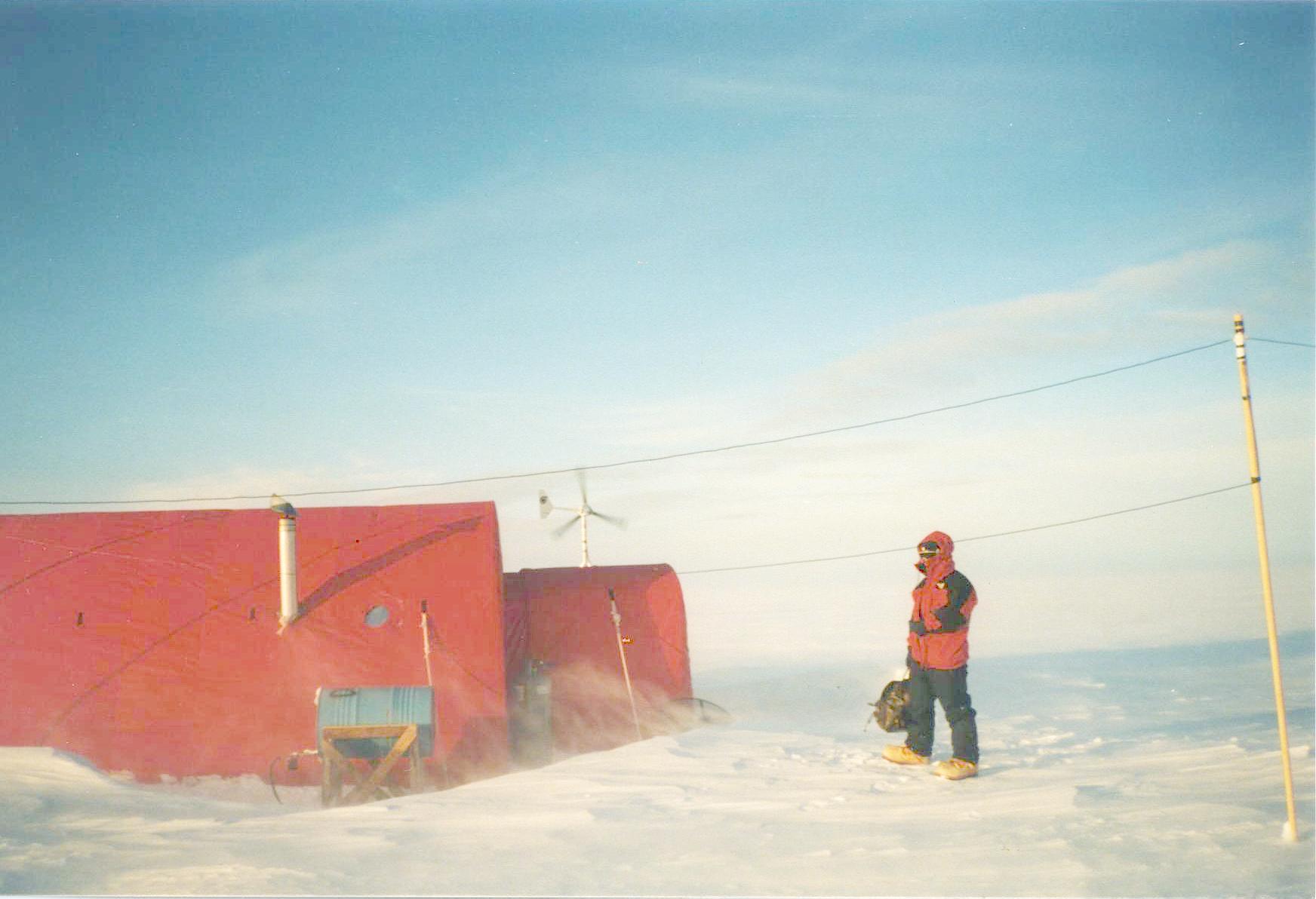Difference between revisions of "Template:POTD protected"
Westarctica (talk | contribs) |
Westarctica (talk | contribs) |
||
| Line 1: | Line 1: | ||
{| role="presentation" style="margin:0 3px 3px; width:100%; text-align:left; background-color:transparent; border-collapse: collapse; " | {| role="presentation" style="margin:0 3px 3px; width:100%; text-align:left; background-color:transparent; border-collapse: collapse; " | ||
|style="padding:0 0.9em 0 0;" | [[File: | |style="padding:0 0.9em 0 0;" | [[File:Jamesway-Hut.jpg|300px]] | ||
|style="padding:0 6px 0 0"| | |style="padding:0 6px 0 0"| | ||
The '''[[Jamesway hut]]''' is a portable and easy-to-assemble hut, designed for polar weather conditions. This version of the Quonset hut was created by James Manufacturing Company of Fort Atkinson, Wisconsin. Insulated blankets in 1.2 m (3 ft 11 in)-wide lengths were made with glass fiber insulation faced with flame-proof muslin and enclosed in plastic-treated cotton that was water-, vermin-, and fire-proof. The hardware (nails, fasteners, and connecting bars) was the only metal component. The whole package weighed 540 kg (1,190 lb) for a 5 meter (16 ft)-square hut. Its wooden packing crates were designed for reuse as the hut floor. | |||
The storage/floor sections, each 1.2 by 2.4 m (3 ft 11 in by 7 ft 10 in) were made from plywood and insulated with R-7 fiberglass insulation, which provided a portable, warm and cleanable floor. The wooden arches holding up the roof were attached to the floor sections with steel fittings and wing nuts, and were strong enough to hold a winter’s snow. The arches, the key to the design, were curved, glue-laminated wooden 15 cm (6 in) beams on 1.2 m (3 ft 11 in) centers that folded in quarters on steel hinges and removable pins. | |||
<p><small>Photographer: | <p><small>Photographer: Ingo Wölbern </small></p> | ||
[[:Category:Images|'''(More Featured Images)''']] | [[:Category:Images|'''(More Featured Images)''']] | ||
<div class="potd-recent" style="text-align:right;"> | <div class="potd-recent" style="text-align:right;"> | ||
Revision as of 06:48, 23 December 2019

|
The Jamesway hut is a portable and easy-to-assemble hut, designed for polar weather conditions. This version of the Quonset hut was created by James Manufacturing Company of Fort Atkinson, Wisconsin. Insulated blankets in 1.2 m (3 ft 11 in)-wide lengths were made with glass fiber insulation faced with flame-proof muslin and enclosed in plastic-treated cotton that was water-, vermin-, and fire-proof. The hardware (nails, fasteners, and connecting bars) was the only metal component. The whole package weighed 540 kg (1,190 lb) for a 5 meter (16 ft)-square hut. Its wooden packing crates were designed for reuse as the hut floor. The storage/floor sections, each 1.2 by 2.4 m (3 ft 11 in by 7 ft 10 in) were made from plywood and insulated with R-7 fiberglass insulation, which provided a portable, warm and cleanable floor. The wooden arches holding up the roof were attached to the floor sections with steel fittings and wing nuts, and were strong enough to hold a winter’s snow. The arches, the key to the design, were curved, glue-laminated wooden 15 cm (6 in) beams on 1.2 m (3 ft 11 in) centers that folded in quarters on steel hinges and removable pins.
Photographer: Ingo Wölbern |